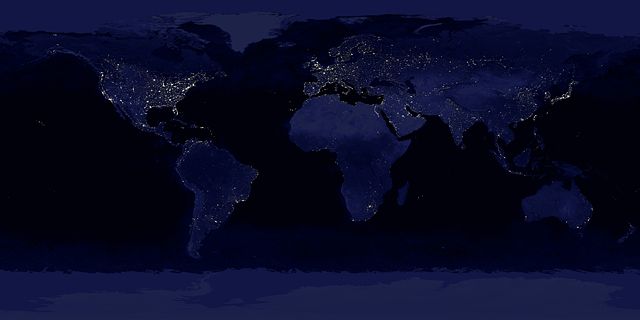Image:Earthlights dmsp.jpg
From Wikipedia, the free encyclopedia

Size of this preview: 640 × 320 pixels
Full resolution (16,384 × 8,192 pixels, file size: 8.11 MB, MIME type: image/jpeg)
| |
This image was selected as picture of the day on the English Wikipedia for June 13, 2004, and April 21, 2005. |
File history
Click on a date/time to view the file as it appeared at that time.
| Date/Time | Dimensions | User | Comment | |
|---|---|---|---|---|
| current | 23:16, 24 October 2005 | 16,384×8,192 (8.11 MB) | Bricktop | (full res) |
| 11:38, 21 July 2005 | 2,400×1,200 (534 KB) | Nk | (''Composite image of the Earth at night, created by NASA and NOAA.'' '''NASA Description''': This image of Earth’s city lights was created with data from the Defense Meteorological Satellite Program (DMSP) Operational Linescan System (OLS).) |
File links
The following pages on Schools Wikipedia link to this image (list may be incomplete):
Metadata
This file contains additional information, probably added from the digital camera or scanner used to create or digitize it. If the file has been modified from its original state, some details may not fully reflect the modified file.
| Horizontal resolution | 72 dpi |
|---|---|
| Vertical resolution | 72 dpi |
| Software used | Adobe Photoshop 7.0 |
| File change date and time | 00:39, 25 October 2005 |
| Y and C positioning | 2 |
| Exif version | 2.2 |
| Colour space | 65535 |
Categories: Wikipedia featured pictures | World maps


